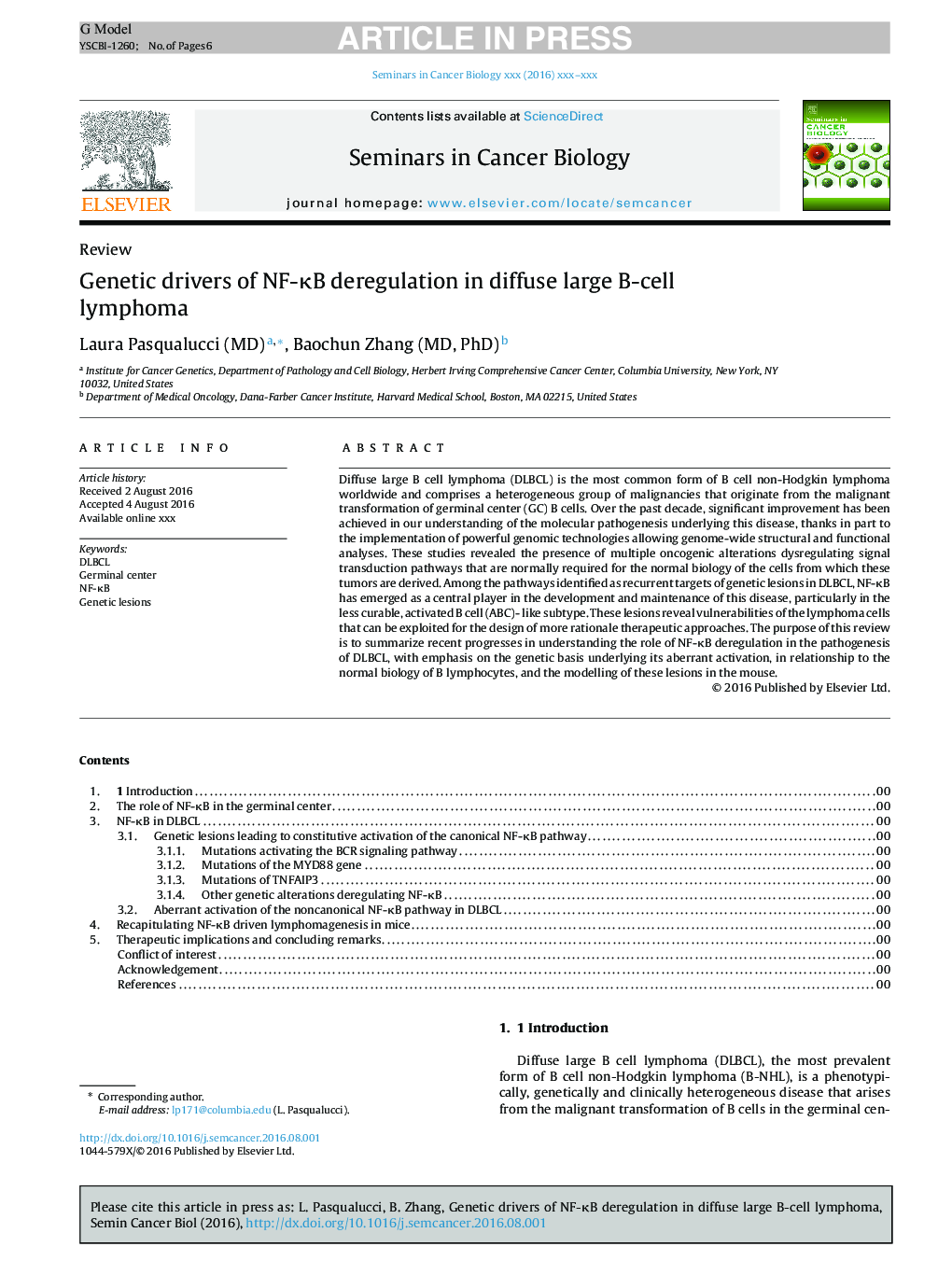| Article ID | Journal | Published Year | Pages | File Type |
|---|---|---|---|---|
| 8362045 | Seminars in Cancer Biology | 2016 | 6 Pages |
Abstract
Diffuse large B cell lymphoma (DLBCL) is the most common form of B cell non-Hodgkin lymphoma worldwide and comprises a heterogeneous group of malignancies that originate from the malignant transformation of germinal center (GC) B cells. Over the past decade, significant improvement has been achieved in our understanding of the molecular pathogenesis underlying this disease, thanks in part to the implementation of powerful genomic technologies allowing genome-wide structural and functional analyses. These studies revealed the presence of multiple oncogenic alterations dysregulating signal transduction pathways that are normally required for the normal biology of the cells from which these tumors are derived. Among the pathways identified as recurrent targets of genetic lesions in DLBCL, NF-κB has emerged as a central player in the development and maintenance of this disease, particularly in the less curable, activated B cell (ABC)- like subtype. These lesions reveal vulnerabilities of the lymphoma cells that can be exploited for the design of more rationale therapeutic approaches. The purpose of this review is to summarize recent progresses in understanding the role of NF-κB deregulation in the pathogenesis of DLBCL, with emphasis on the genetic basis underlying its aberrant activation, in relationship to the normal biology of B lymphocytes, and the modelling of these lesions in the mouse.
Keywords
Related Topics
Life Sciences
Biochemistry, Genetics and Molecular Biology
Biochemistry
Authors
Laura MD, Baochun MD, PhD,
